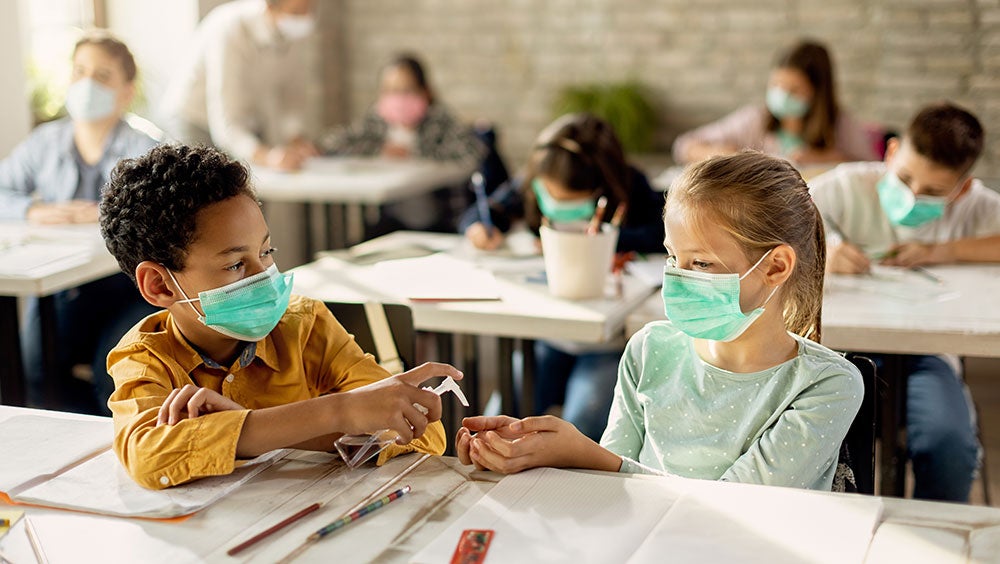The CDC Says Kids Can Go Back to School: What Do They Say About Doing It Safely?
The COVID-19 pandemic has revealed a number of insights, including the many ways in which schools are important for the health of our children. With the closing of schools to address the spread of COVID-19 infection, a growing body of evidence and expert consensus agree that in-person schooling is critical to the health and development of children. On February 12, 2021, the CDC released updated guidance pushing for reopening schools during COVID-191-2.

What is the basis for the new recommendation that schools can reopen safely?
Many studies have been published recently showing that young children (particularly those in elementary school) are not strong drivers of community transmission of COVID-19. These data suggest that it is possible to reopen schools safely, as long certain mitigation measures are in place to protect teachers, students and school staff. Such measures include physical distancing, wearing masks, improving ventilation, and a focus on effective cleaning and disinfection practices. A recent article in the Journal of the American Medical Association (JAMA) summarized the literature on COVID-19 infection rates in schools3. The authors found that in several schools in the US, school attendance was not associated with increased risk of infection in the school or in the community. Furthermore, in schools with high mask adherence, COVID-19 incidence was lower than in the surrounding community.
What is the new guidance from the CDC?
The new guidance says that schools can reopen safely and provides different strategies to prevent COVID-19 outbreaks based on several factors, including the level of community transmission, the use of COVID-19 testing and screening, and the grade level of the students. For example, elementary schools can be open for some in-person schooling even in communities where COVID-19 transmission is high. By contrast, a high school in a community with moderate COVID-19 transmission may have less in-person schooling.
Overall, the major recommendations for operating schools safely include:
- Universal masking (all students, teachers, staff, and visitors must wear masks)
- Increasing handwashing and hand hygiene practices
- Implementing physical distancing (3 feet between people)
- Improving ventilation in buildings
- Daily cleaning and disinfecting and greater frequency of cleaning and disinfecting of high-touch surfaces
- Incorporating COVID-19 testing and screening
With the above mitigation measures in place, CDC does not recommend that vaccination of teachers, staff, and students be a requirement for reopening. However, CDC does recommend that teachers and staff be given priority for vaccination.
CDC recommends daily cleaning and disinfecting of schools and more frequent disinfecting of high-touch surfaces
As part of a layered mitigation strategy, the CDC has recommended daily cleaning and disinfecting of schools with more frequent disinfecting of high-touch surfaces (such as doorknobs, desk surfaces, sinks and faucets, shared materials, and playground equipment). End-of-day cleaning and disinfecting may still be managed by janitorial or custodial staff members; however, teachers and other school staff will likely need to clean and disinfect high-touch surfaces during the school day. Teachers and other staff should be provided with training, materials, and appropriate personal protective equipment to clean and disinfect safely. General guidance for safe cleaning and disinfecting include:
- Students should not be present during cleaning and disinfecting, and students should not be using cleaning products themselves.
- Choose products for disinfecting that are EPA-registered and on EPA List N. Products on List N have verified claims as a disinfectant and will kill SARS-CoV-2, the virus that causes COVID-19. According to the EPA, disinfectants on List N are also expected to kill all emerging variants of SARS-CoV-2.
- Ensure that staff follow the instructions for use on the product label. Some products may need to remain wet on a surface for up to 10 minutes to be effective.
- Never allow staff to mix cleaning products.
- For surfaces that contact food, have staff do a rinse with potable water after disinfecting if the product label states this is required.
- Staff should wear personal protective equipment as recommended on the product label. This may include gloves, a face mask, a respirator, or eye protection, depending on the type of product.
For the latest information on COVID-19 and variants, visit our CloroxPro COVID-19 Hub.
REFERENCES
1. Centers for Disease Control and Prevention. (2021). Operational strategy for k-12 schools through phased mitigation. Retrieved February 12, 2021, from https://www.cdc.gov/coronavirus/2019-ncov/community/schools-childcare/operation-strategy.html
2. Centers for Disease Control and Prevention. (2021). Operating schools during covid-19: CDC’S CONSIDERATIONS. Retrieved February 12, 2021, from https://www.cdc.gov/coronavirus/2019-ncov/community/schools-childcare/schools.html
3. Honein, M. A., Barrios, L. C., & Brooks, J. T. (2021). Data and policy to guide opening schools safely to limit the spread of sars-cov-2 infection. JAMA. doi:10.1001/jama.2021.0374


